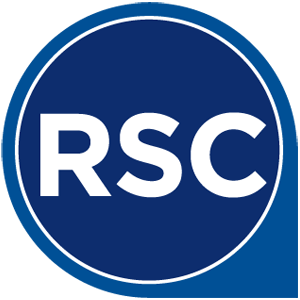This week we are proud to bring you Part 7 of our 10-Part series on successfully implementing an IWMS. In this article we will discuss the importance of Properly Resourcing your IWMS and Facilities Department in an IWMS Integration.
In order to produce a plentiful harvest, a farmer must prepare his land, plant good seeds, fertilize, water, and weed the land. It is utterly impossible for plants to grow if they are not adequately taken care of. The same can be said of business. If one does not put the adequate time, energy, and money into every aspect and department of their business it cannot succeed. Simply put: you reap what you sow.
Shoestring budgets will always fail
There is a fallacy that plagues many companies. It is this: any facility or department can operate on a shoestring budget. This is false. In fact, it is extremely detrimental for a company and may end up costing you tens of thousands to millions of dollars.

The fact is, when any vital department, like Facilities Management, is not given enough money, people, resources, or time to accomplish their tasks or goals they are being set up for failure. Sure, it may be possible to operate under these circumstances for a while, but not without huge negative consequences.
You will soon find your employees are less productive and overworked with extremely low morale. Instead of the problem solving and innovative Facilities Team you hired, you’ll find your team is rushed and overexerted by constantly putting out figurative fires. With your “harvest” in mind, you must plan out what exactly it will take to reap all that you need, and provide all the resources it will take to successfully achieve your goals.
In this case, if you’re not appropriately investing in your Facilities and IWMS Software systems, you are going to reap failure, and it will cost you dearly.
Bringing in an IWMS
The best way to combat being under resourced is to bring in an IWMS. At first, The facilities department may be apprehensive that the system will create more stress for their already overtaxed resources. However, the benefits of an IWMS are clear once the system is in place.
One of the greatest benefits of an IWMS to any department is that it shows, in real time, with statistical and measurable proof, when any given department is under resourced. It outlines what can and will happen if the appropriate changes are not made.
In other words, an IWMS will identify why your team is overtaxed and how the issue can be fixed.
Remedying the cost of under resourced departments
Once the company understands why it is vital that the Facilities department is properly resourced, changes will be made. That being said, it is imperative you put proper resources into maintaining the IWMS as well. When an IWMS is not adequately resourced, the data provided might be inaccurate. In order for an IWMS to produce valuable data, it must be kept current.

Remember, you reap what you sow. If there are not
enough people to input accurate up-to-date data, the reports generated by the system will be worthless.
At RSC we have seen first-hand, the benefits that come when companies properly resource their IWMS Systems. Here are a few examples:
- SGI - Saved more than $30 million dollars*
- PG&E - Saved $3 million dollars*
- Macromedia - Saved over $2 million dollars*
Fantastic results, such as those mentioned above come when companies are able to make strategic decisions based on current and accurate reports generated by their IWMS.
If these companies had nickel and dimed their IWMS systems, it’s likely their data would be inaccurate. If the data in the IWMS is inaccurate the reports generated will be of no value. Thus they would have never made the vital discoveries they had and therefore would still be unnecessarily spending millions of dollars each year.
Companies run more efficiently by resourcing their IWMS systems and listning the data they provide. These companies have the proper teams in place. They have an Internal Champion in place who understands the data and provides detailed reports by the end of each month. These companies have employees who consistently own and input accurate data, have thoughtful standards put in place, understand their business process, and know bigger is not always better.
In other words, companies like this get a 95-98% occupancy and vacancy accuracy rate and thus can do preventative maintenance on an unprecedented level. With this kind of data, it is possible to make accurate and timely decisions about what equipment needs to be maintained or replaced. Gone are the days of epic failures and meltdowns.
What proper resourcing looks like
In order to make that kind of facilities magic happen, we recommend one person to devote to the IWMS for every 500 people you have on staff. This means if you’re company employs 1,000 people, you will need 2 IWMS System Specialists.
When you realize the absolute necessity of having an IWMS, you need to make sure you have the right resources in the right places so you can have the good, clean, accurate data. The only way to guarantee impactful, detailed reports that help provide you with the tools to make strategic decisions that will impact your bottom line with multimillion dollar results is to properly resource your Facilities department and IWMS. And because you reap what you sow, you will see some amazing results.
*
The case studies mentioned earlier in the article may be found on our website in the drop-down links under “Services” *
Like what you read? Subscribe to the blog and follow us on Twitter, Facebook, and Linkedin to keep up to date with the latest news from RSC, LLC.
Thoughts? Questions? Comment below and let us know what you think! We'd love to hear your insights.


















